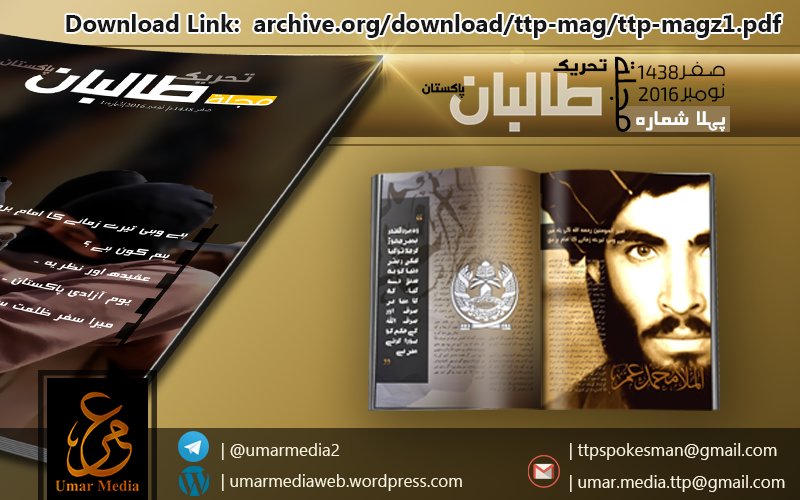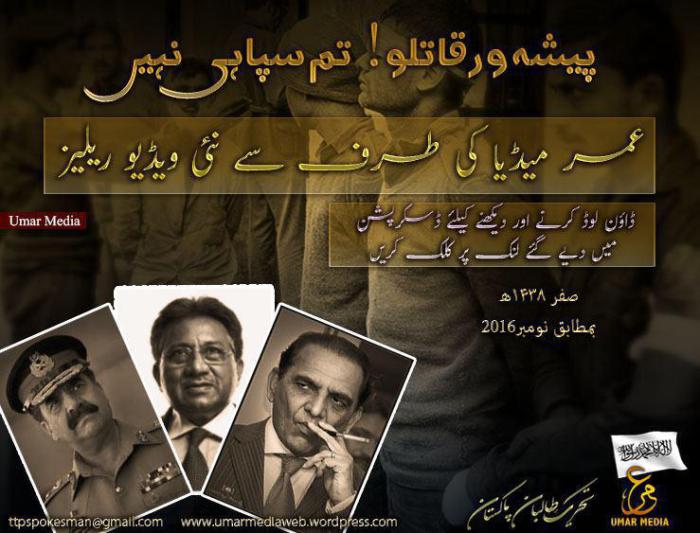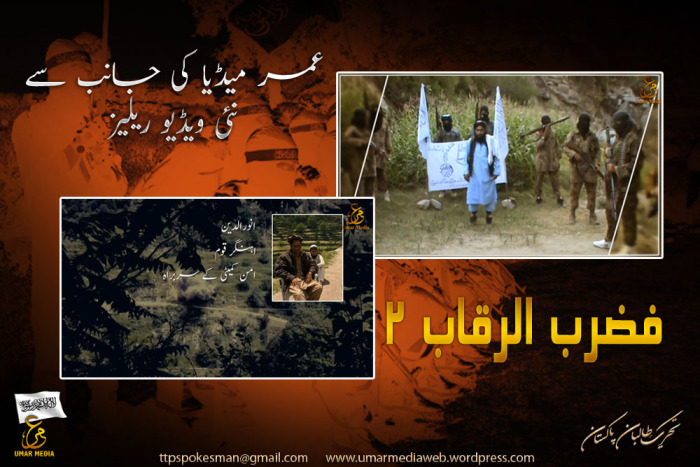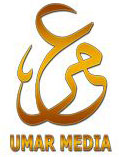
Episode 1:
What was the purpose behind establishing jihadi organizations by the Pakistani agencies?
Allah Almighty has made human kind with variation in their nature. That is the reason why mood of every individual is different. Some people are strict while some people are of very soft and sensitive nature. Some are wise and clever while some are very simple.
In the same way you may have seen in your society that Muslims also have different trends among them.
Some of them love preaching Islam, some love teaching Islam, some are very curious about writing and reading Islamic booksand some in speeches.
Similarly jihad is a duty of Islam, some Muslims have natural trend towards jihad while some try to avoid it due to their cowardice.
It is same like a person who is waiting that when azan will be called and he will rush towards mosque to prostrate before his lord while other person offer prayer because it is just an obligatory on him which he has to fulfil.
So due to difference in human nature, trends also vary among human societies.
Now let’s come towards the actual point, Pakistan intelligence agencies among which ISI stands on top, knew that in whole Pakistan, there is a big section of population who is natural fighter and is eager to join jihad.
This section of Pakistani nation will surely try to find ways to fulfill their desire for doing jihad and they will definitely fight when they will get a chance.
Now ISI knew that this section of society could become a threat to this political system and national interest in the near future and can wage jihad against this democratic system and try to implement sharia in Pakistan for which Pakistan was made.
So whenever they will find a jihadi platform, they will not hesitate to join it and will become a major threat to our infidel democratic political system.
And the reason behind their being threatened is because of Pakistani nation’s passion and sincerity to help oppressed Kashmiri brother had reached to such an extent that they were willing to fight for the oppressed Kashmiri Muslims in any possible way.
So ISI thought, why not join the caravan of mujahedeen, like hypocrites, it will appear as we are working along with them but in reality we will fulfill our hidden agendas and underlying interests.
And apparently,we will deceive them that we are supporting Kashmir jihad on the national level, by providing training and funding.
Purpose of ISI behind this was not to strengthen Kashmir jihad, but to collect information about sincere Mujahideen, who lives where? What are their objectives? How to control them when necessary or to eliminate them if they aren’t controlled!
So that when these jihadist become threat to national interest, they could be controlled prior to them posing any risk to national interest and to know their intensions and eliminate them before any harm to national interest. Therefore one purpose of government sponsored jihadi organizations has been mentioned above while another purpose was to maintain constant pressure on India by using these jihadi organizations without using any proper military force.
So the goal was not to avenge the atrocities in Kashmir but was to pressurize India in pretext of national interest.
So that the time passes by without any threat to national interest.
ISI started spying in jihadi organizations in the name of training and funds using their spy’s who started to give information about affairs sincereMujahideen with time.
However when these organizations came into existence, they started to become stronger with time, sincere Mujahideen started hard fight, and in a short period of time, started giving Hindus a hard time in Kashmir.
These Mujahideen became real threat for India, their intense attacks on India caused damage and as a result pressure on India was increasing and conditions were getting worse and moving towards a permanent war.
Pakistani coward government and military agencies knew that if war was to be started on massive scale then apparently things are not in our favor because Indian force is superior in every aspect.
Most cowardly force in the world did not want face to face war with Hindus because they don’t have trust in help of Allah almighty, rather they trust on apparent reasons. That’s the reason why they haven’t started offensive war with India but always relied upon defensive wars. On which they are still entertaining themselves on media and social media although the facts are far away from what they claim, their real bravery was seen by whole world in Dhaka in 1971.
However when these jihadi organizations intensified their war because of their sincerity, then ISI started feeling threatened that we have to control them and limit their attacks otherwise, if they continue in same way then India could start full fledge war against us.
Following the footstep of their infidel masters, ISI adopted policy of “Divide and Rule” and started trying to split the Mujahideen by infiltrating their spy’s in the ranks of Mujahideen to control them.
As a result, those Mujahideen who were fighting the enemy under one leadership split into differentgroups, this split reduced their capabilities of effectively carrying out attacks against enemy and also deviated them from their real purpose.
May curse of Allah be upon these wicked people of ISI who teared apart unity of Muslimummah and damaged them by splitting them in groups. If jihad in Kashmir would have continued with same level of dedication and sacrifice like before then Kashmir surely would have been under Mujahideen control and Muslims of Kashmir would have been liberated long time ago.
To be continued…
Pakistani Government Sponsored Jihadi Organizations
and Role of Pakistani Intelligence Agencies
Episode 2:
In the last part we gave the reason of why Pakistan intelligence agencies are making and supporting official jihadi organizations. In this part we will discuss that how these agencies play their disgusting role in wasting and weakening the precious jihadi force of Muslimummah.
First attempt that they made was that they penetrated their spies in the ranks of Mujahideen, who split the Mujahideen into different groups with different leaderships by following “divide and rule” policy of their colonial masters.
Then they spread misconceptions among the groups against each other, as a result the collective force which was fighting Indian army with their full strength turned against each other and after that, each group started defaming other group which weakened the Mujahideen forces in their fight against Indian army.
And this exactly was the wish of ISI.
After splitting them..ISI gained strong grip over these organizations and made them unable to surpass a limited battle field, boundaries of which were set by ISI. If any group even thought to exceed its limits then ISI would put economic sanctions on that group and change its leadership which would follow dictations of ISI and compel other lower level Mujahideen to follow their dictatorship. Any mujahid who refused, was warned or eliminated from the path if necessary.
Due to limited role of the jihadi organizations and working under dictatorship of ISI, same battle front which was becoming graveyard of Hindus became limited and after some time battle fronts became quite and intense battle completely stopped.
In the past when Mujahideen were well organized and working under one leader, they were conducting operations on a greater scale regularly. After Mujahideen split into groups and became weak. Threat of full fledge war with India was over for Pakistan army and ISI.
I am not throwing by myself, by comparing conditions and events of the past and present, it is a clear evident for familiar persons.
Indeed there are many sincere Mujahideen in these organizations who are doing jihad to raise the word of Allah Almighty. Whoever understood the motives and goals of ISI tried to reform but their effort went in vain and atlast they migrated towards Waziristan and started jihad in Pakistan and Afghanistan because jihad is the order of Allah which is not limited to any geographical boundary. It depends on the order of sharia irrespective of any location or geography. If jihad is ordered in your own home country then true servant of Allah will perform jihad and obey Allah’s orders irrespective of location.
Therefore, large number of popular KashmiriMujahideen migrated towards Waziristan in which IlyasKashmirir.a ,Faizshaheedr.a , commander of war Qari Imran Shaheed are prominent .
Now present situation is that, due to involvement of ISI, although these organizations give rhetoric speeches on media but these organizations have been weakened to such an extent that whenever government is under pressure from India than they don’t go towards these organization. Rather they request Taliban for help.
A similar situation occurred few years back when a delegation was sent by government to TTP’s Amir BaitullahMehsud, who was led by MNA Shah Abdul Aziz for request of Taliban’s support against India.
You can see interview of Shah Abdul Aziz on capital talk with HamidMir as a proof. I think it’s enough for today.
Insha’Allah in next part /episode, we will discuss about the type of disgusting tactics that were used by ISI to weaken these organizations.
Pakistani Government Sponsored Jihadi Organizations
and Role of Pakistani Intelligence Agencies
Episode 3:
..Fact revealing episode..
Any department or organizations you go, you will always find some thieves in every department. Such class of thieves always tries to find ways for making money, these type of people are also present in jihadi organizations as well as in agents infiltrated by military intelligence in the ranks of these jihadi organizations.
This is a story of a leader who used to launch Mujahideen on Kashmir front. These official jihadi organizations take help of ISI guides for launching Mujahideen into Kashmir front.
These local guides are settled here for many years and have extensive experience in the areas of their ancestors and they know the routes quite well, that’s









